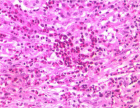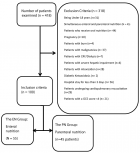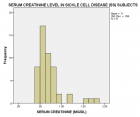Current Issue (Volume - 9 | Issue - 2)
The Evolutionary Horizons of Social Systems
Published on: 17th January, 2025
This document has been translated from Spanish into English using ChatGPT. While efforts have been made to ensure accuracy and maintain the original meaning, some nuances or interpretations may differ from the source text. For any clarification, please refer to the original document or contact the author.This brief article addresses the concern arising from the accelerated whirlwind of changes of all kinds experienced by our social systems, some of which have a significant evolutionary impact, largely driven by advances in science and technology. Particular interest has emerged in connecting certain properties inherent to the behavior of complex systems far from equilibrium—such as social systems—under the framework of properties currently studied in Complexity Sciences. The article outlines this concern, which is, for now, merely the beginning of what could develop into a groundbreaking investigation. It references laboratory simulation work aimed at understanding the evolutionary horizons of Chile’s social system. The text includes an example of some graphs that illustrate a potential method for detecting and anticipating possible evolutionary horizons of the social system, based on the role played by certain “attractor variables” within the system. However, the research is still exploratory, and this article serves merely as a general description of the initial concern.
Fabrication and Optimization of Alginate Membranes for Improved Wastewater Treatment
Published on: 27th January, 2025
Alginate, a naturally occurring biopolymer extracted from brown algae, presents a promising avenue for developing sustainable and efficient membranes for wastewater treatment. This review comprehensively examines recent advancements in the fabrication, modification, and application of alginate-based membranes for effective water purification. The paper delves into various fabrication techniques, including casting, electrospinning, and 3D printing, which influence the structural and functional properties of the resulting alginate membranes. To enhance performance, strategies such as crosslinking, incorporation of porogens, and surface functionalization are employed. These modifications optimize crucial properties like mechanical strength, porosity, selectivity, and antifouling resistance. Furthermore, Response Surface Methodology (RSM) has emerged as a valuable tool for systematically optimizing fabrication parameters, enabling researchers to identify optimal conditions for achieving desired membrane characteristics. The integration of alginate membranes with biological treatment processes, such as phycoremediation (utilizing microalgae) and mycoremediation (employing fungi), offers a synergistic approach to enhance wastewater treatment efficiency. By immobilizing these microorganisms within the alginate matrix, their bioremediation capabilities are amplified, leading to improved pollutant degradation and nutrient removal. In conclusion, alginate-based membranes demonstrate significant potential as a sustainable and effective technology for wastewater treatment. Continued research and development, focusing on optimizing fabrication processes and exploring innovative integration strategies with biological systems, will further advance the application of alginate membranes in addressing the pressing global challenge of water pollution.
Analysis of Acoustic Parameters of Voice Jitter and Shimmer in Children with Dysphonia after Laryngeal Surgery
Published on: 4th February, 2025
The article conducted a study of computer acoustic analysis of Jitter and Shimmer voice parameters in children with dysphonia after laryngeal surgery. The study found that children with dysphonia had significantly lower preoperative Jitter and Shimmer scores (574359, 587, and 2.3) compared to healthy children (1316743.376 and 4.84). At 1 month after surgery, affected children showed a decrease in Jitter and Shimmer indices compared with these acoustic indices before surgery. However, at 2 months, there was a significant increase in Jitter and Shimmer scores, and at 3 months, Jitter and Shimmer scores were comparable to Jitter and Shimmer scores in healthy children without dysphonia. The results of the study show that the method of analyzing the acoustic parameters of the voice Jitter and Shimmer allows a phoniatrist to objectively assess the occurrence of a voice disease in patients with dysphonia, and this method is the most accurate criterion for determining the pathologies of dysphonia and determining the treatment program for the disease.
The Limitation of Determination Structure of the Agreed Rate of Return for Public-Private Partnership (PPP) Road Projects and Improvement in South Korea
Published on: 5th February, 2025
Public-Private Partnership (PPP) road projects are being promoted worldwide to encourage road investments; however, research on the appropriate rate of return for these projects is insufficient. This is likely because the return on investment for PPP road projects is determined through negotiations between the government and the private sector, a process that remains confidential. The rate of return for PPP road projects is not only a key indicator for evaluating project performance but also a potential driver for future government financial subsidies. Therefore, research on the appropriate rate of return for PPP road projects is necessary for the sustainability of these projects.This study, based on the concept that both the government and the private sector share the anticipated risks of the project, quantifies six types of risks and proposes a model for predicting the appropriate rate of return. The model is able to explain approximately 68% of the cases in South Korea’s PPP road projects. The risk with the greatest influence on the rate of return was found to be an economic risk, while the least influential was regulation change risk.Due to the confidentiality of data related to PPP road projects, this study only utilized 54 cases from South Korea. It is hoped that a wider range of data will be collected and further research on the appropriate rate of return will continue to enhance the sustainability of PPP road projects.
Bifurcations and control studies in Circadian Rhythms in Drosophila
Published on: 7th February, 2025
Bifurcation analysis and Multiobjective Nonlinear Model Predictive Control (MNLMPC) calculations were performed on a model of circadian oscillations of the Period (PER) and Timeless (TIM) proteins in Drosophila. The MATLAB program MATCONT was used to perform the bifurcation analysis. The optimization language PYOMO was used along with the state-of-the-art global optimization solvers IPOPT and BARON for the MNLMPC calculations. The bifurcation analysis revealed oscillation causing Hopf bifurcations while the MNLMPC calculations revealed the existence of spikes in the control profiles. Both Hopf bifurcation points and the control profile spikes were eliminated using an activation factor involving the hyperbolic tangent function.

HSPI: We're glad you're here. Please click "create a new Query" if you are a new visitor to our website and need further information from us.
If you are already a member of our network and need to keep track of any developments regarding a question you have already submitted, click "take me to my Query."

























































































































































